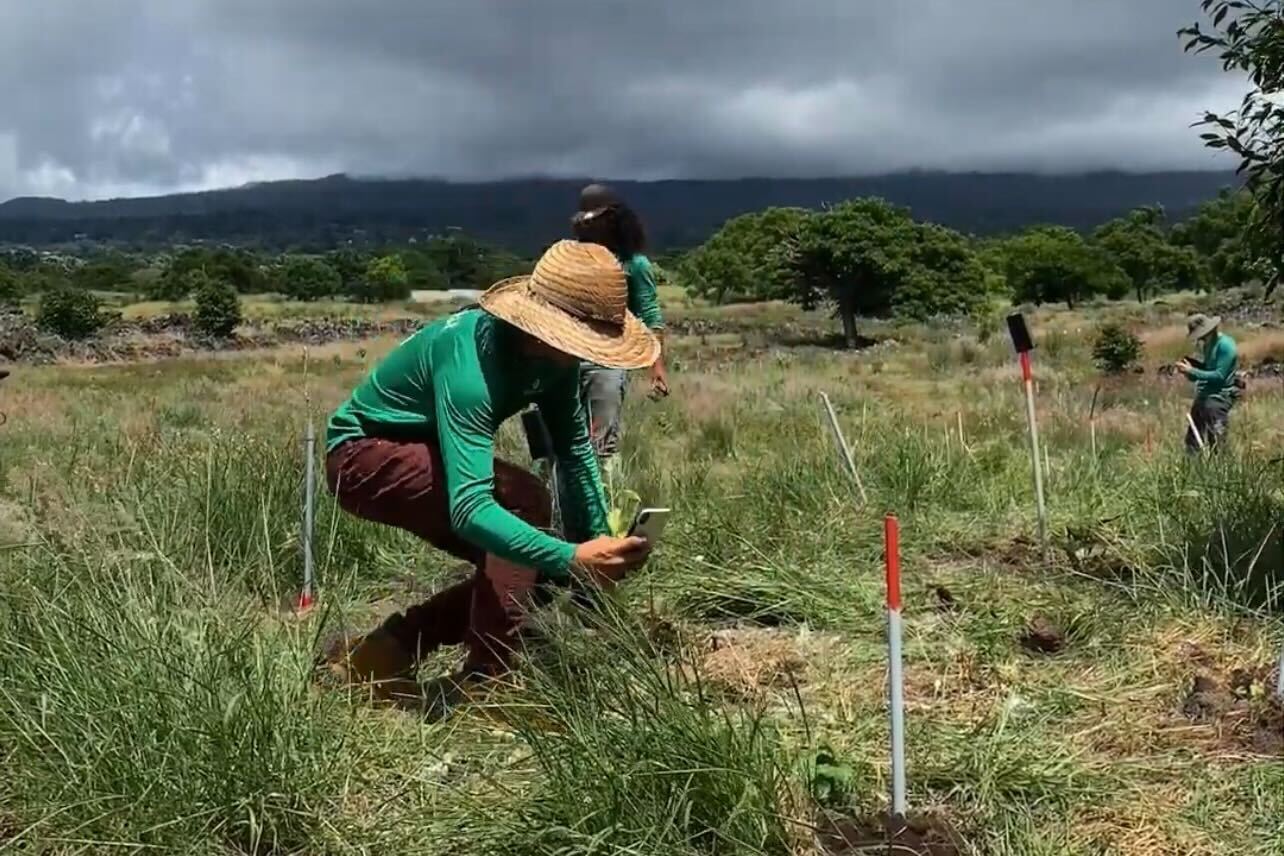
A Terraformation team working on a reforestation project. (Image courtesy of Terraformation.)
While developing seed banks to facilitate reforestation, the Terraformation product team discovered a huge data collection gap in projects seeking to recover forested areas. According to the foresters and community groups the team collaborated with, no software could facilitate tracking the huge amount of data generated by reforestation projects.
Data for tree monitoring — when it was planted, how big it is, how fast it’s growing — was tracked in intensely laborious ways with literal pen and paper or Excel spreadsheets. Terraformation decided to bridge that gap and developed a tool that would help foresters gather information to make reforestation projects more effective: Terraware.
Reforestation isn’t a field that interests most tech companies, and foresters are not a common target audience for the development of apps, said Nicole Wilke, head of product at Terraformation.
“If you can't track reforestation efforts, which are really big and really complex, it's going to be hard to know what's being successful,” Wilke told TriplePundit. “It's going to be hard to practice what we call adaptive management, which is essentially learning from your mistakes, and course-correcting as you go through one of these projects.”
The lack of forestry project management and tracking mechanisms is one of the reasons why there is very little data about forestry on the ground. This makes successful reforestation projects difficult to replicate since there’s no hard data on why a project might have succeeded.
Conversely, when a tree dies or doesn’t grow at an expected rate, lack of data makes diagnosing what went wrong difficult — if not almost impossible — because of all the variables that go into foresting that aren’t being regularly monitored.
“We surveyed hundreds of foresters around the globe, everywhere, on every continent and asked what their biggest challenges were in being able to do that effectively,” Wilke said. “It sounds simple, but 70 percent of them said that one of their biggest needs was a way to do that without it being wildly labor intensive.”
The tracking offered by Terraware starts at the beginning of a tree’s life, from when the seed is collected from the mother tree and what information is already known about it. How long has this seed been in the seed bank? Where did it come from, and what do we know about it? What kind of processing has happened to it?

Once seeds are sent to a nursery, Terraware can be used to track the germination rate of that lot of seeds, which informs future seed use. “We can know that a tree is working out and say, ‘Let’s go get more seeds,’” Wilke said.
This kind of forestry tracking can also prevent the failure of reforestation projects because of things like pests or fungi, which are famously difficult to predict until it’s too late.
“If you're tracking mortality in your nursery regularly, and you have a system that can detect a small spike, maybe you can detect that early and take a closer look and figure out what's going on,” Wilke said. This kind of monitoring can inform future planting techniques and locations, depending on what the data says.
While reforestation has historically been trackable through satellite images, that method does not allow for on-the-ground monitoring of young trees, Wilke said. The inability of satellites to capture trees from the beginning of their lives up to five years of age is another issue Terraware is well-equipped to solve.
“If that tree's going to die, it's probably going to be in the first three to five years, when it's prone to be eaten by animals or just dying generally since it's vulnerable,” Wilke said.
The current gap in data collection also results in a lack of data sharing between foresters and reforestation projects across the world, making collaboration between key players in the space difficult. With Terraware, Wilke hopes sharing information about what works and what doesn’t will be easier — which is why the software is open-source and free to use for anyone who needs it.
“It's just a tool that we want to put in your hands,” Wilke said. “And that's how we think that it can help in the fight against climate change.”
For Wilke, Terraware also has the potential to make reforestation projects easier and less risky for investors.
“My hope is if we get some people using this and we get so much data on what's working and what's not, we can help guide reforestation projects using some of that evidence,” Wilke said. “By using some of that data, we can drive the cost of these expensive [reforestation] projects down because there will be less risk. We know what works and there’s less experimentation needed.”
The new app, which is informed by a number of global surveys with foresters and land protectors, was rolled out in Spanish first, Wilke said. The next horizon is to translate the app to French.
The collective building of Terraware is in the spirit of collaboration that is necessary for combating climate change, Wilke said.
“We do not view these projects as our projects,” she said. “We're developing them in partnership with these local communities. We only work with partners that are either led by these communities or organizations that have really, really deep ties to them. It's a dialogue where we're learning from them as a part of what they're sharing.”

Nicole Froio is a writer and researcher currently based in Rio de Janeiro in Brazil. She has a doctorate in Women's Studies from the University of York. She writes about gender in pop culture, social movements, digital cultures and many other topics.














